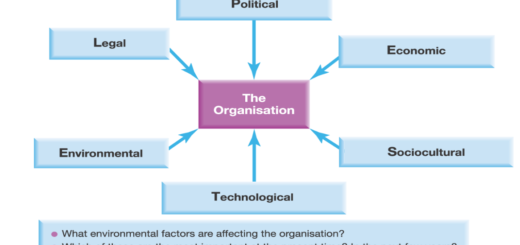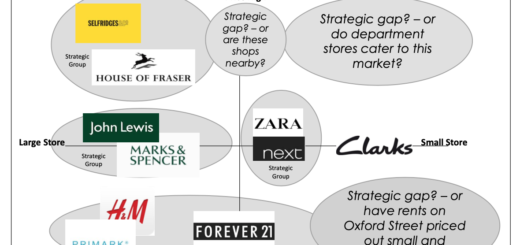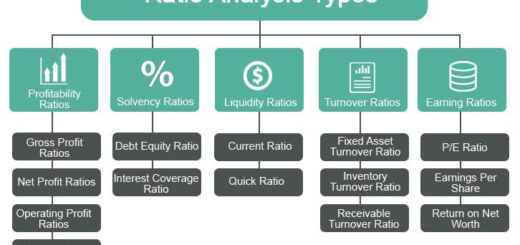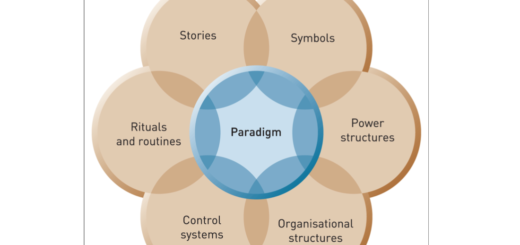McKinsey’s 7s Model
The model was developed in the late 1970s by Tom Peters and Robert Waterman, former consultants at McKinsey & Company. McKinsey’s 7S Model is a framework for analyzing and improving an organization’s effectiveness. The model consists of seven interdependent elements, each of which represents a different aspect of the organization’s structure and strategy. The seven elements are:

- Strategy: The organization’s plan for achieving its goals and objectives.
- Does the company have a clear and credible strategy?
- Is the process for setting and changing direction too rigid or too emergent?
- Structure: The formal organization chart and reporting relationships that define how work is divided and coordinated.
- Does the organisational structure of the company support the strategy?
- Is the structure very flat or very hierarchical?
- Systems: The procedures, processes, and routines that guide how work is done and decisions are made.
- Do the processes and procedures – everything about how the work is done – support the organisation’s strategy?
- Is there sufficient flexibility and control?
- Shared values: The organization’s core beliefs, attitudes, and values that shape its culture and guide decision-making.
- Is the organizational culture aligned to the strategy?
- What are the common beliefs, attitudes and ideals? What does it feel like to work here?
- Skills: The abilities and competencies of the organization’s employees and the degree to which these skills are aligned with the organization’s strategy.
- Does the organisation have resources and competences to be successful?
- Does it need to focus on existing competences or develop new ones?
- Style: The leadership style and management practices of the organization’s leaders.
- Is the leadership style of the organisation and how managers behave aligned to the strategy?
- Is the managerial style too transactional or is it transformational?
- Staff: The organization’s human resources and the degree to which the staff is aligned with the organization’s strategy.
- Are there the right number and type of people in the organisation?
- Are the reward schemes aligned to the strategy?
According to the model, these seven elements must be aligned and mutually reinforcing in order for the organization to be effective. If there is a misalignment between any of these elements, the organization may face challenges in achieving its goals and objectives. The model can be used to identify areas of misalignment and develop a plan to improve the organization’s effectiveness.
Example of how McKinsey’s 7S Model might apply to Xiaomi
Here’s an example of how McKinsey’s 7S Model might apply to Xiaomi, the Chinese electronics company:
- Strategy: Xiaomi’s strategy is to provide high-quality, affordable smartphones and other electronics to a global market.
- Structure: Xiaomi has a flat organizational structure, with teams organized around specific products or projects.
- Systems: Xiaomi has a strong supply chain management system, with a focus on efficient production and delivery.
- Shared values: Xiaomi values innovation, customer satisfaction, and community building.
- Skills: Xiaomi has a skilled and diverse workforce, with expertise in hardware and software design, manufacturing, and customer service.
- Style: Xiaomi’s leadership style is entrepreneurial and focused on innovation, with a willingness to take risks and experiment with new ideas.
- Staff: Xiaomi places a strong emphasis on employee development and empowerment, encouraging employees to take ownership of their work and contribute to the company’s success.
In this example, Xiaomi’s strategy of providing affordable, high-quality electronics is supported by its flat organizational structure, efficient supply chain, and skilled workforce. The company’s values of innovation and customer satisfaction are reflected in its entrepreneurial leadership style, while its focus on employee development helps to build a strong, motivated workforce. By using McKinsey’s 7S Model to align these elements, Xiaomi can continue to grow and innovate while maintaining its competitive advantage in the global electronics market.
7s Checklist Questions:
- Strategy:
- What is our strategy?
- How do we intend to achieve our objectives?
- How do we deal with competitive pressure?
- How are changes in customer demands dealt with?
- How is strategy adjusted for environmental issues?
- Structure:
- How is the company/team divided? What is the hierarchy?
- How do the various departments coordinate activities?
- How do the team members organize and align themselves?
- Is decision-making and controlling centralized or decentralized? Is this as it should be, given what we’re doing?
- Where are the lines of communication? Explicit and implicit?
- Systems:
- What are the main systems that run the organization?
- Where are the controls and how are they monitored and evaluated?
- What internal rules and processes does the team use to keep on track?
- Shared Values:
- What are the core values?
- What is the corporate/team culture?
- How strong are the values?
- What are the fundamental values that the company/team was built on?
- Style:
- How participative is the management/leadership style?
- How effective is that leadership?
- Do employees/team members tend to be competitive or cooperative?
- Are there real teams functioning within the organization or are they just nominal groups?
- Staff:
- What positions or specializations are represented within the team?
- What positions need to be filled?
- Are there gaps in required competencies?
- Skills:
- What are the strongest skills represented within the company/team?
- Are there any skills gaps?
- What is the company/team known for doing well?
- Do the current employees/team members have the ability to do the job?
- How are skills monitored and assessed?







I am constantly searching online for ideas that can assist me. Thank you!